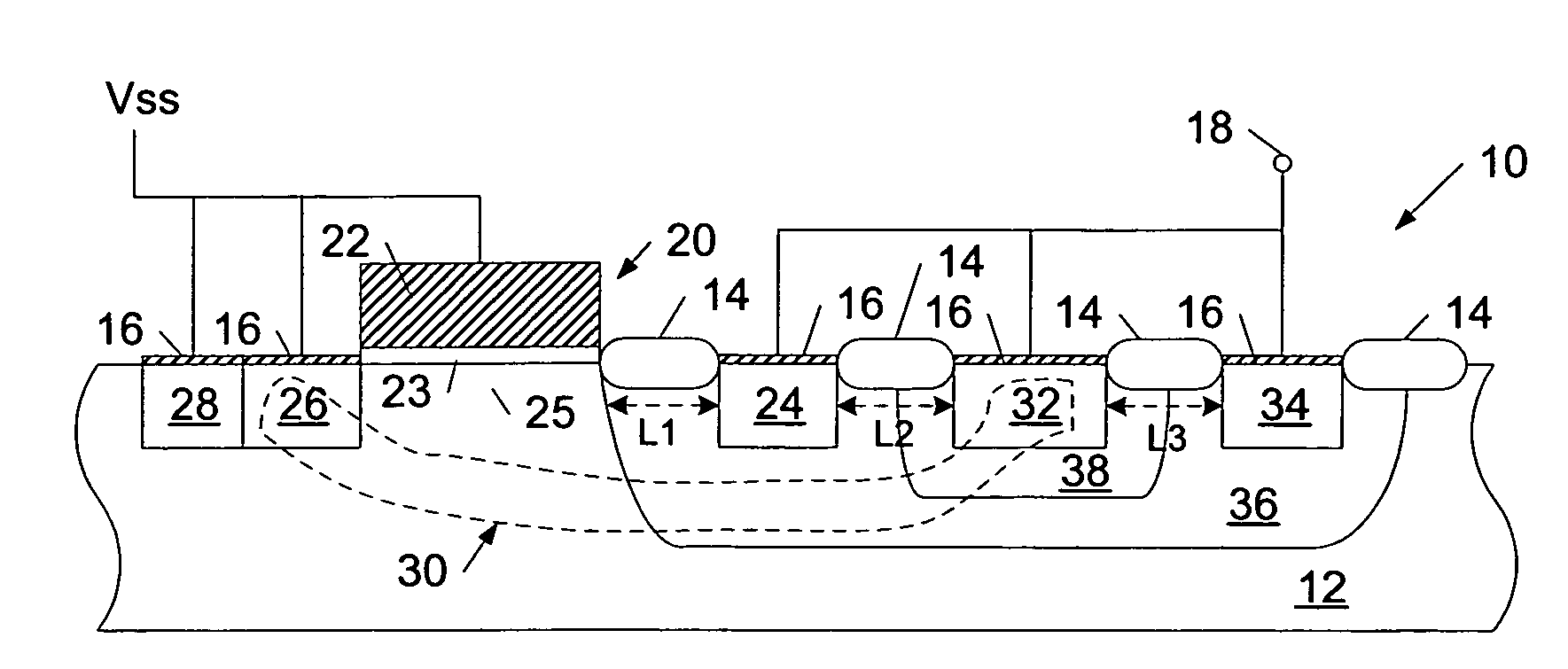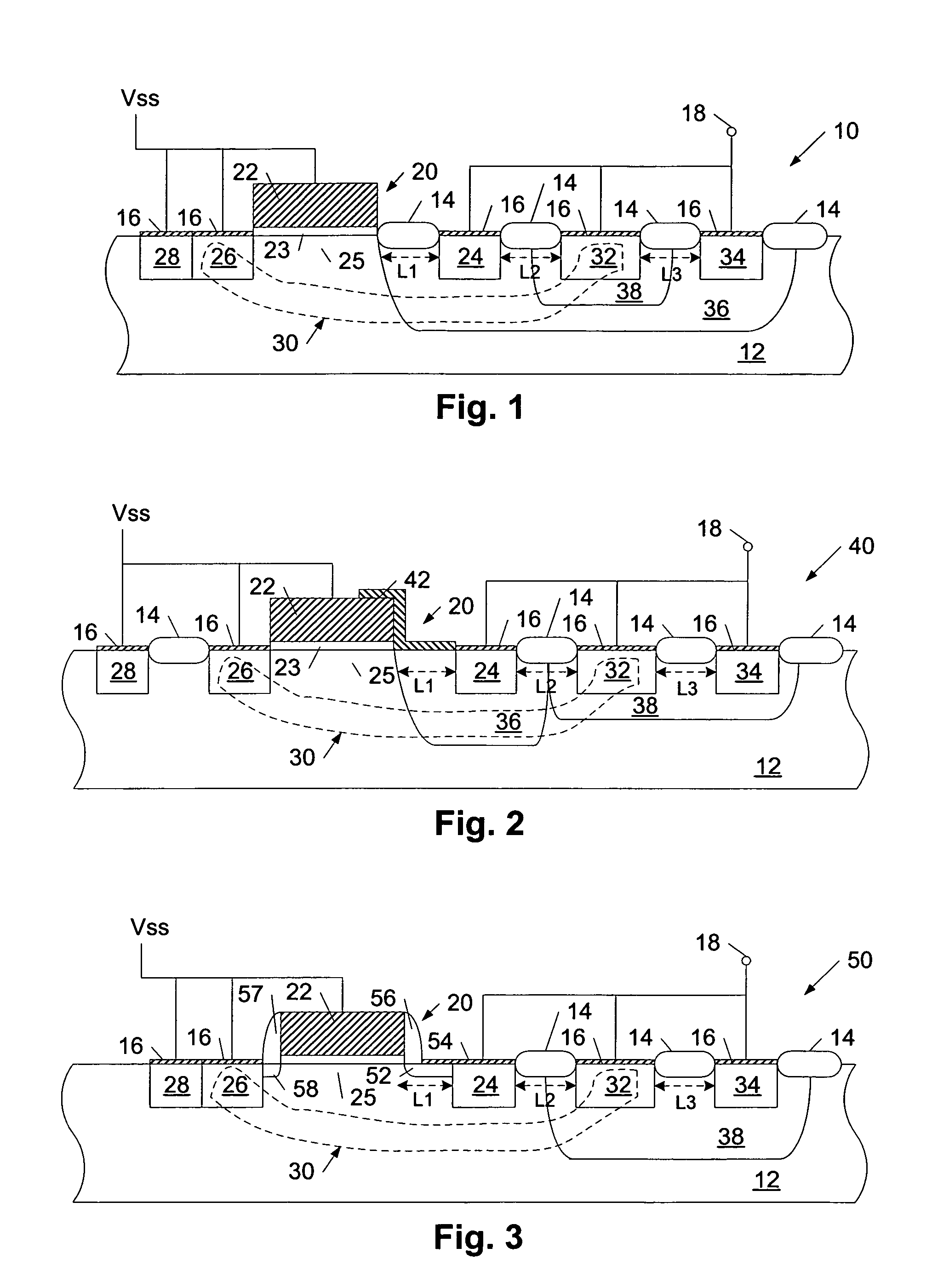Circuits providing ESD protection to high voltage laterally diffused metal oxide semiconductor (LDMOS) transistors
a metal oxide semiconductor and transistor technology, applied in semiconductor devices, semiconductor/solid-state device details, diodes, etc., can solve problems such as contact spiking, silicon melting, or metal interconnect melting, and integrated circuit devices are susceptible to damage from excessive voltage application,
- Summary
- Abstract
- Description
- Claims
- Application Information
AI Technical Summary
Benefits of technology
Problems solved by technology
Method used
Image
Examples
Embodiment Construction
[0020]Turning to the drawings, exemplary devices for protecting laterally diffused metal oxide semiconductor (LDMOS) output driver transistors from damage caused by electrostatic discharge (ESD) events are illustrated in FIGS. 1-4. More specifically, cross-sectional views of exemplary semiconductor topographies, which are configured to divert charge from a bus coupled to an active LDMOS output driver transistor (i.e., a LDMOS pull-down output driver transistor or a LDMOS pull-up output driver transistor), are shown in FIGS. 1-4. In addition, FIG. 5 illustrates a schematic of an exemplary circuit detailing an arrangement of one or more of the semiconductor topographies depicted in FIGS. 1-4 in positions relative to output driver transistors, signal pads, and power supply pads of the circuit. As discussed in reference to FIG. 5, the ESD protection devices described herein are distinct from the active LDMOS output driver transistors they are used to protect and, as such, the protection...
PUM
 Login to View More
Login to View More Abstract
Description
Claims
Application Information
 Login to View More
Login to View More - R&D
- Intellectual Property
- Life Sciences
- Materials
- Tech Scout
- Unparalleled Data Quality
- Higher Quality Content
- 60% Fewer Hallucinations
Browse by: Latest US Patents, China's latest patents, Technical Efficacy Thesaurus, Application Domain, Technology Topic, Popular Technical Reports.
© 2025 PatSnap. All rights reserved.Legal|Privacy policy|Modern Slavery Act Transparency Statement|Sitemap|About US| Contact US: help@patsnap.com



